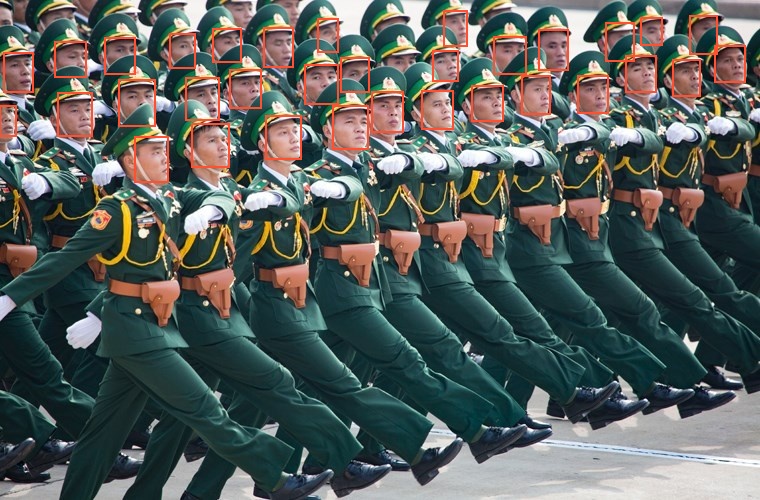Face-SSD-MXNet
Face Detector trained by SSD by WIDER dataset
By Danh Doan
Demo video available here: [link]
0. Installation
- Install MXNet framework and GluonCV toolkit
-
For CPU only:
pip install mxnet gluoncv -
For GPUs
pip install mxnet-cu90 gluoncvChange to match with CUDA version.
mxnet-cu100if CUDA 10.0 is installed
-
1. Prepare Dataset
1.1 Download WIDER face dataset
-
Obtain
trainandvaldatasets from WIDER [link] Create a symbol link to WIDER directoryln -s /path/to/WIDER -
Move all image file to JPEGImages folder to easily manipulate
mkdir JPEGImages
1.2 Create record data
Follow lst-rec-prep.ipynb to create List and RecordIO file - they are the dataset format developed by MXNet. To support the training procedure, it is preferred to utilize data in binary format rather than raw images as well as the annotations.
If you are not familiar with this process, refer this tutorial [link]
1.2.1 Create LST file
Follow step 0 to step 2 to first create .lst file. By performing these steps, 2 file train.lst and val.lst are generated.
1.2.2 Create REC file
After obtaining the .lst files. Start generating .rec by using built-in feature from MXNet
python /path/to/incubator-mxnet/tools/im2rec.py train.lst WIDER/JPEGImages/ --pass-through --pack-label
python /path/to/incubator-mxnet/tools/im2rec.py val.lst WIDER/JPEGImages/ --pass-through --pack-label
It's gonna take a few seconds to create record files for train and val datasets. After finishing this step, 4 files are created:
- train.idx
- train.rec
- val.idx
- val.rec
Move all generated files to datasets directory
mkdir datasets
mv *.lst *.idx *.rec datasets
2. Train SSD-Face
After the preparation process is successfully done. The training procedure can be started by the following command:
python3 train_ssd.py
This is the full training program originally from MXNet [link].
In this program, face detector is trained by fine-tuning technique and the object detection pretrained model is trained from VOC dataset.
import gluoncv as gcv
TARGET_CLASSES = ['person']
net = gcv.model_zoo.get_model('ssd_300_vgg16_atrous_custom', classes=TARGET_CLASSES, pretrained_base=False, transfer='voc')
Checkpoints are saved every 10 epochs and the best model with the best accuracy in val set is also stored and updated after every single epoch.
3. Results:
After processing the training procedure, 3 files are obtained:
- ssd_300_vgg16_atrous_voc_best_map.log
- ssd_300_vgg16_atrous_voc_best.params
- ssd_300_vgg16_atrous_voc_train.log
test-face-detector.ipynbis the notebook developed to test the performance of trained Face detection model
Results from my work:
Test with video:
python3 test-ssdface-vid.py -v /path/to/video -s -r -n video_name
Check the argument parser in altusi/helper/funcs.py to make use of the arguments
